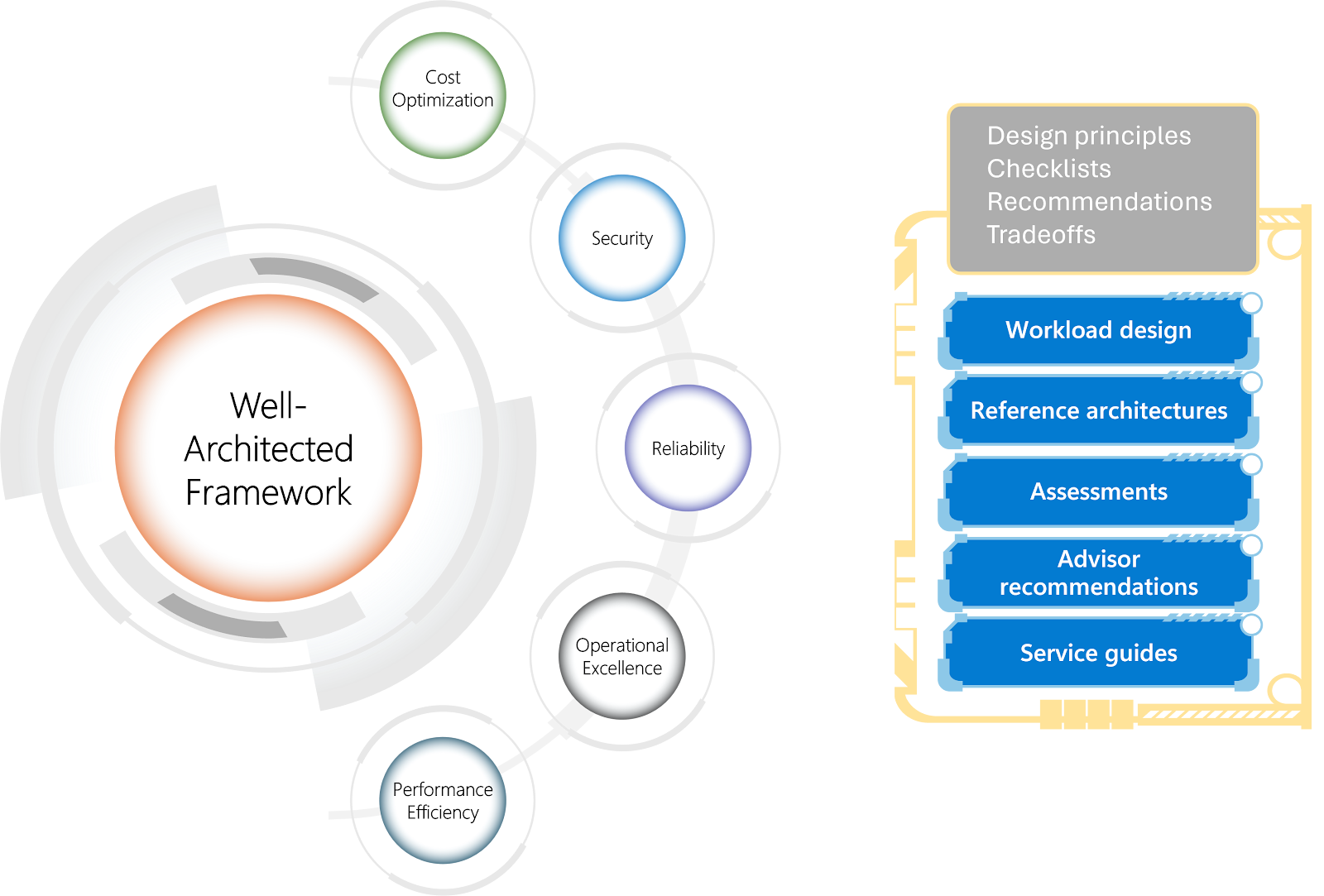Small and medium-sized businesses often face a common challenge: the absence of experienced cloud engineers. Due to limited resources, teams typically choose the quickest path—getting things done in the easiest, fastest way. Unfortunately, this approach often leads to solutions that aren't secure, cost too much, and become nearly impossible to extend or manage effectively.
Recognizing this critical challenge, Microsoft Azure has developed the Well-Architected Framework. This comprehensive set of guidelines and best practices helps businesses assess their existing solutions and guides them toward building robust, secure, cost-effective, and manageable cloud infrastructures from the start.
The Azure Well-Architected Framework is structured around five essential pillars:
Cost Optimization: Ensuring that cloud resources are used efficiently and effectively, reducing unnecessary expenses.
Operational Excellence: Focusing on the ability to run and monitor systems effectively, ensuring continuous improvement and optimal performance.
Performance Efficiency: Enhancing workloads to meet business needs and efficiently respond to changes in demand.
Reliability: Ensuring solutions are resilient, highly available, and recoverable in case of disruptions.
Security: Protecting applications and data through robust security measures, risk management, and compliance adherence.
Specifically, the framework helps architects:
-
Identify and mitigate risks early, preventing costly architectural flaws and future rework.
-
Adopt proven best practices, ensuring consistent quality and security standards.
-
Achieve scalability and manageability, enabling easier expansion and adjustment as business requirements evolve.
-
Optimize resource usage and cost efficiency, avoiding wasteful spending and ensuring economic viability.
Even beyond Azure, applying these structured principles can lead to significant improvements in the resilience, effectiveness, and adaptability of any technical architecture. For any SMB embarking on their cloud journey, embracing the Azure Well-Architected Framework—or any structured architecture assessment—can significantly improve outcomes and sustainability. Don't just do it the easy way—do it the right way!

I've seen many projects that lack proper frameworks and structured approaches.
ReplyDelete"Don't just do it the easy way—do it the right way!" — such a great quote!
Thanks! Yes, we have a lot of different methodologies and practices for software architecture, and it’s still really hard to choose the right one—or even maintain and follow it as the project grows.
Delete